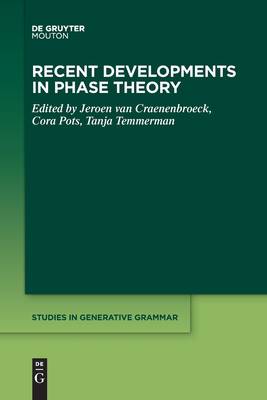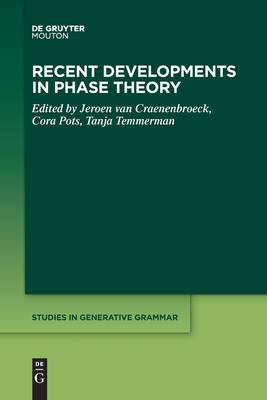
Door een staking bij bpost kan je online bestelling op dit moment iets langer onderweg zijn dan voorzien. Dringend iets nodig? Onze winkels ontvangen jou met open armen!
- Afhalen na 1 uur in een winkel met voorraad
- Gratis thuislevering in België vanaf € 30
- Ruim aanbod met 7 miljoen producten
Door een staking bij bpost kan je online bestelling op dit moment iets langer onderweg zijn dan voorzien. Dringend iets nodig? Onze winkels ontvangen jou met open armen!
- Afhalen na 1 uur in een winkel met voorraad
- Gratis thuislevering in België vanaf € 30
- Ruim aanbod met 7 miljoen producten
Zoeken
Recent Developments in Phase Theory
€ 38,95
+ 77 punten
Omschrijving
The overarching goal of this volume is to explore a number of recent developments in Phase Theory (both theoretical and empirical), thus contributing to our overall understanding of the concept of phases.
The volume is divided into three parts, of which the first focuses on the traditional role played by phases in defining successive cyclicity, while at the same time examining the interaction between that traditional role and Chomsky (2013)'s proposal about labeling. The second part focuses on the question of whether only the highest projection of the clausal and nominal domain, CP and DP, are phases or whether those domains also contain an internal phase: vP and NP/NumP/QP, while the third part contains two chapters that focus on the extent to which ellipsis can be used as a reliable diagnostic for phasehood.
As a whole, the volume provides a detailed and in-depth view on a number of recent developments in Phase Theory, which will likely continue to dominate the debate for several years to come.
The volume is divided into three parts, of which the first focuses on the traditional role played by phases in defining successive cyclicity, while at the same time examining the interaction between that traditional role and Chomsky (2013)'s proposal about labeling. The second part focuses on the question of whether only the highest projection of the clausal and nominal domain, CP and DP, are phases or whether those domains also contain an internal phase: vP and NP/NumP/QP, while the third part contains two chapters that focus on the extent to which ellipsis can be used as a reliable diagnostic for phasehood.
As a whole, the volume provides a detailed and in-depth view on a number of recent developments in Phase Theory, which will likely continue to dominate the debate for several years to come.
Specificaties
Betrokkenen
- Uitgeverij:
Inhoud
- Aantal bladzijden:
- 224
- Taal:
- Engels
- Reeks:
- Reeksnummer:
- nr. 139
Eigenschappen
- Productcode (EAN):
- 9781501527241
- Verschijningsdatum:
- 18/07/2022
- Uitvoering:
- Paperback
- Formaat:
- Trade paperback (VS)
- Afmetingen:
- 156 mm x 234 mm
- Gewicht:
- 353 g

Alleen bij Standaard Boekhandel
+ 77 punten op je klantenkaart van Standaard Boekhandel
Beoordelingen
We publiceren alleen reviews die voldoen aan de voorwaarden voor reviews. Bekijk onze voorwaarden voor reviews.










